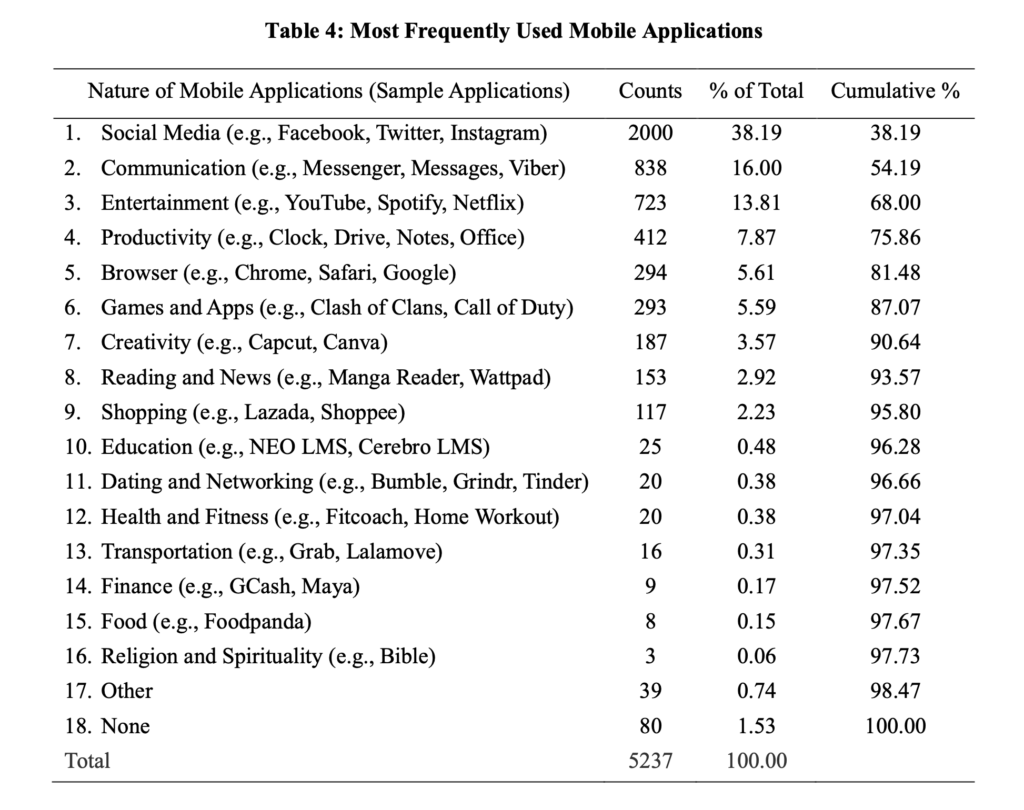Living alone increases level of anxiety; no link between anxiety and time spent with smartphones
20 Mar 2024

This quantitative research was completed with the primary objective of determining whether anxiety and digital phenotypes might be regarded as markers of diversity. The objective was attained by checking the differences and relationships among or between the anxiety levels, the amount of time spent on smartphones, the most frequently used mobile applications, and the demographic profiles of 103 selected university students. The following demographic profiles were included in the study: gender, degree of higher education, living arrangement, and student employment status. The findings disclosed that the participants shared comparable anxiety levels when grouped according to their gender, degree of higher education, and student employment status. Hence, only their anxiety levels, when clustered according to living arrangements, show significant differences. Their living
arrangement is the sole variable that also exhibited a significant relationship to their anxiety scores, which means that university students who live alone may imply that they experience a higher level of anxiety. Furthermore, the study revealed that anxiety levels and digital behaviors of the participants have shown no relationship at all, as seen by the data collected during both one-week and two-week periods. This indicates that the screen time or time spent with smartphones by the participants may not be associated with their anxiety levels.
This quantitative study focused on anxiety and smartphone usage among selected university students, specifically the significance of differences and correlations between these variables and the demographic profile of the participants. The findings of this research could meaningfully inform the development of innovative support structures aimed at fostering the mental well-being of undergraduate and graduate students. The study concludes that only the living arrangement can influence the anxiety level and smartphone usage of students, not their gender, employment status, or degree of education. Therefore, tertiary institutions should consider implementing specific mental health and technology-focused interventions for students who live alone or independently. This means that this specific group of students will be closely observed and provided with the required support.
Authors: Royce A. Salva (De La Salle University Dasmariñas, University of the Philippines Diliman), Paula Glenda Ferrer Cheng (De La Salle University Manila, National University Mall of Asia) and Roann Munoz Ramos (De La Salle University Dasmariñas)
Read the full article: http://www.seaairweb.info/journal/articles/JIRSEA_v21_n02/JIRSEA_v21_n02_Article04.pdf
